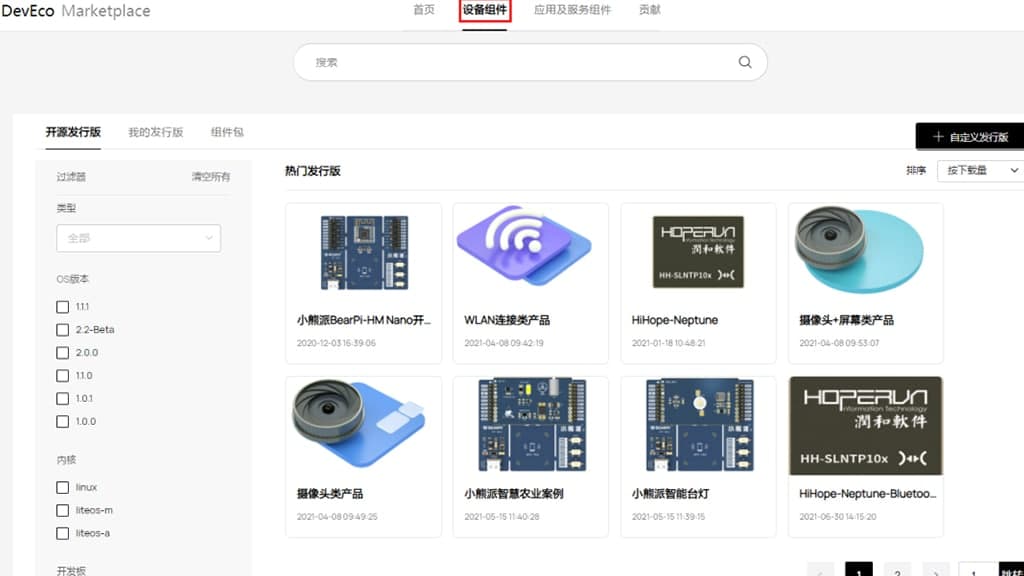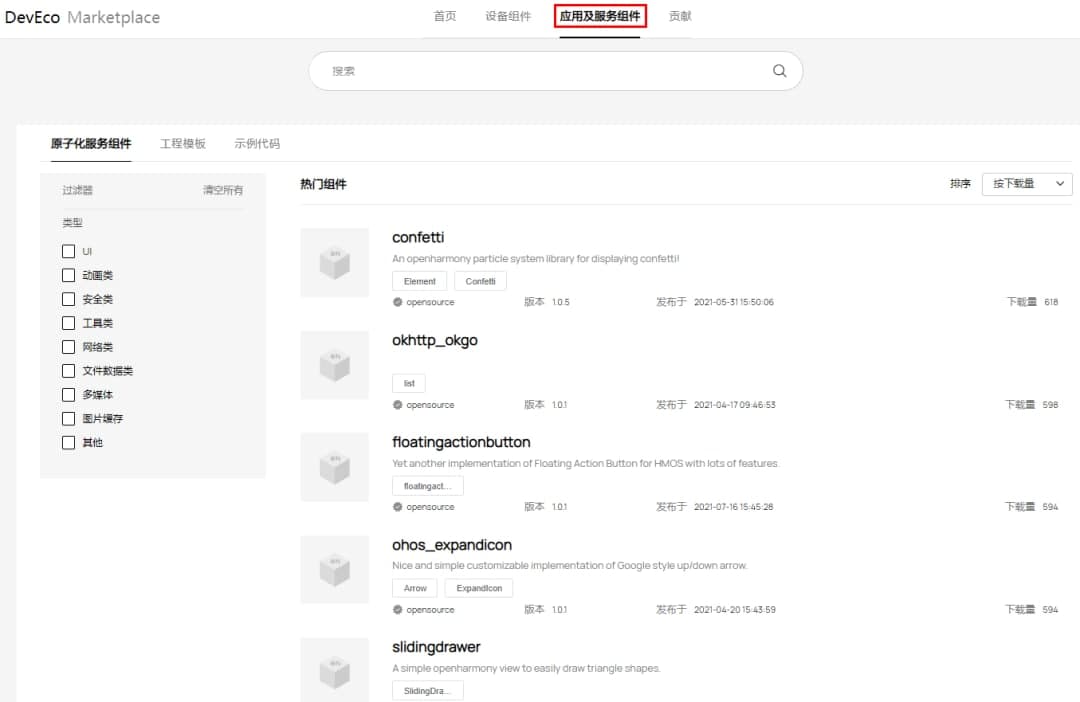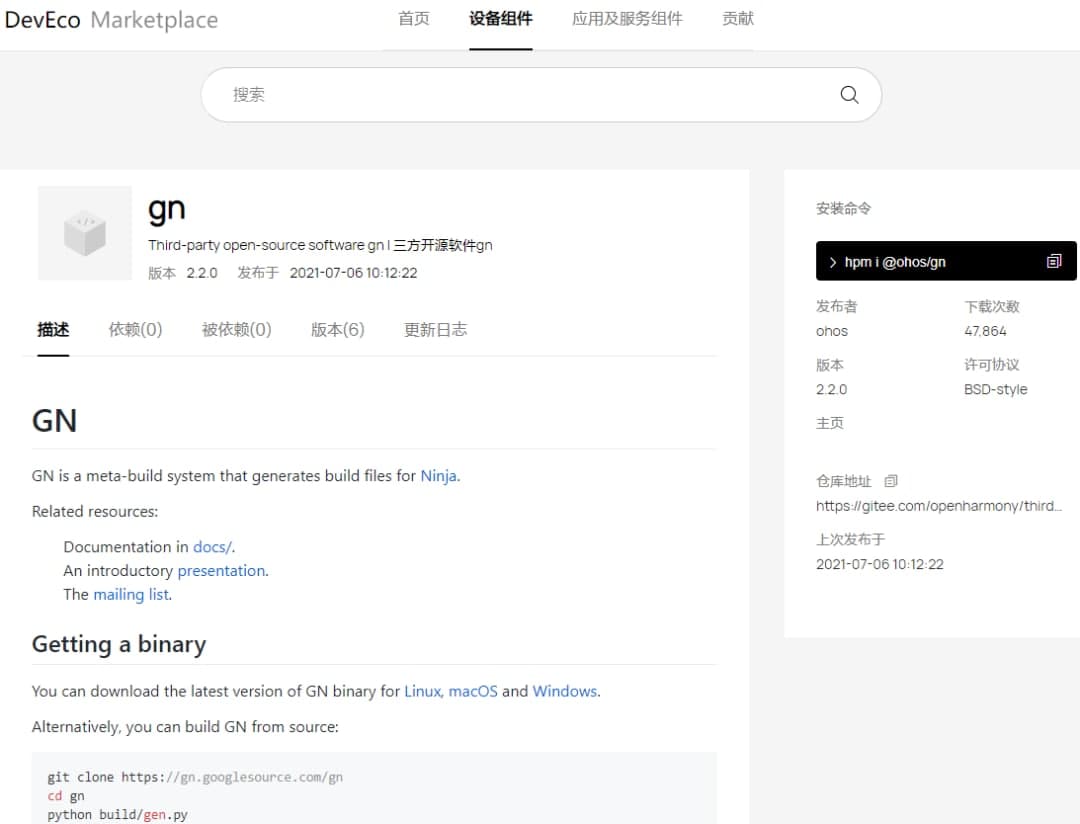HarmonyOS
Huawei HarmonyOS official website launches DevEco Marketplace

Huawei has launched a new development resource center on the official HarmonyOS website, DevEco MarketPlace. At this place, developers will find summaries of various development resources such as native libraries, third-party libraries, sample codes, and more.
Here we’ll be going to check the latest HarmonyOS DevEco MarketPlace information detailed below.
DevEco MarketPlace:
HarmonyOS DevEco MarketPlace polymerization a wealth of ecosystem resources development kits, enabling developers to easily obtain the resources needed one-stop, easy to complete the development of Hong Meng-chi of hardware, atomic services, and applications.
The DevEco MarketPlace website divides resources into two categories, which are displayed on the following two pages: “Device Components” page: Resource library for device developers, providing release and component package resources.

“Application and Service Components” page: A resource library for application developers, providing atomic service components, project templates and sample code resources.

Resource library for device developer
IT Home is informed that the “Device Components” page of the HarmonyOS DevEco MarketPlace website provides development resource kits for device developers, bringing developers open source releases (supporting custom components) such as WLAN connection products and camera products, as well as support Developers customize their own distribution and provide many component packages for developers to download.
The “Device Components” page is divided into three sub-pages:
- Open source releases: Provide open source releases of a variety of typical products, and support developers to add customizable components to the open-source releases to get the releases they need.
- My release: support developers to customize the release of lightweight and small systems, and provide management functions for custom releases.
- Component package: Provides popular system components, including the kernel, driver, service framework, and other types of components.
Let’s take a look at the specific functions of these three subpages:
Open-source distribution:
On the “Open Source Releases” sub-page, developers can filter out the required open source releases based on the combination of OS version, kernel, and development board conditions, and click to enter the release details page.
The release details page displays the release’s features, instructions for use, dependent components, and other information, and provides the download function of each version (including historical versions) and the function of customizing components.
My distribution:
On the “My Release Version” sub-page, developers can customize the release version, that is, select the development board, kernel, system services, application examples, compilation tools, and components according to their needs, and customize their own release version. After the customized release version is saved, it will be displayed on the “My Release Version” page, and subsequent developers can manage the release version defined by themselves.
Note: The sub-page of “My Distribution” needs to be displayed after the developer logs in with a Huawei account.
Component package:
On the “Component Package” sub-page, developers can filter out the required components based on the combination of type, OS version, kernel, and development board conditions, and click to enter the detailed page of the component.
The component details page displays the component’s description, dependencies with other components, installation commands, and other information, and provides the download function for each version (including historical versions).

Resource library for an application developer
The “Application and Service Components” page of the DevEco MarketPlace website provides application development resource kits for application developers, such as atomic service components in typical scenarios, application development project templates, and API sample codes.
The “Application and Service Components” page is divided into three sub-pages:
Atomized service component Provides a wealth of atomized service component resources, including UI, security, multimedia, network, and other types of components.
Project template: Provide application development project templates for super terminals and various equipment, covering a variety of typical industry scenarios.
Sample code: Provide popular API sample code and typical scenario examples.
Let’s take a look at the specific functions of these three subpages:
Atomized service components
On the “Atomic Service Components” sub-page, developers can filter out the required components by component type (such as UI, animation, security, etc.) or combination of component types, and click to enter the component’s details page.
The component details page displays the component’s description, dependencies with other components, installation commands, and other information, and provides the download function for each version (including historical versions).
For animation components, the “Description” supports the display of the animation effect of this component and provides a detailed introduction, usage instructions, configuration instructions, and other information for this component.
The “installation” on the component details page shows how to add the component dependency to the project.
Project template
On the “Project Template” sub-page, developers can filter out the required project template by device type (such as Phone, Tablet, Car, etc.) or combination of device types, and click to enter the project template details page. As the details page of the project, the template displays the description and version information of the template, and it also supports jumping to the official website to view the use documents, making development smoother.
Developers who have known about the features of the new version of DevEco Studio 2.2 Beta2 should already know that DevEco Studio has added the function of the template market. From the latest version of DevEco Studio, you can directly obtain the project templates on the DevEco MarketPlace website! For specific details, please see our previous new tweet on DevEco Studio 2.2 Beta2.
3. Sample code
On the “Sample Code” sub-page, developers can filter out the required sample code by type (such as ability, common, device, etc.) or type combination, and click to enter the sample code details page. The sample code details page provides a detailed introduction to the code and supports one click “Warehouse Address” to go directly to Gitee to view the source code.
In addition to the above resource libraries, the “contribution” page of the DevEco MarketPlace website provides developers with a platform for sharing development resources. Huawei welcomes developers to participate in the co-construction of the Hongmeng Ecosystem and share original components and sample codes for use by developer partners.






